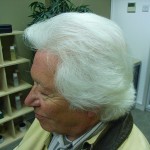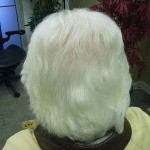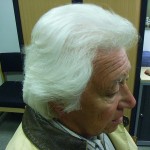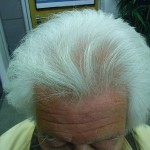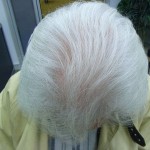15.05.2008
in Uncategorized
For those who love their hair, and want to keep it, top U.S. expert Dr. Alan Bauman offers five tips on how to predict future baldness.

Boca Raton, FL (PRWEB) May 14, 2008 — Did you know that by the time hair loss becomes visible to the naked eye, you’ve already lost 50-percent of hair density?
“Early detection and prevention is the key to a lasting head-of-hair for both men and women,” said Alan J. Bauman, M.D., a board certified hair restoration physician and leading U.S. expert on male and female hair loss. “It’s important for everyone to learn about the medical causes of hair loss early on so they can keep healthy hair growing well into their golden years.”
While there’s no foolproof “crystal ball” for predicting hair loss, new medical information and genetic research have made it possible to determine a patient’s chances for experiencing hair loss later in life.
According to Dr. Bauman, who’s treated thousands of patients with hair loss over the last 10 years, there are five ways to “predict” future baldness:
1. “Folliscope” – Because hair loss happens slowly and subtly over time, new technology, like the Folliscope, can provide a microscopic view of the scalp to determine the status of a patient’s hair follicles. Hair caliber and hair density can be measured and compared in different areas and over time. Taking a set of high-resolution “global” photos, or “medical mug-shots,” is also helpful for tracking hair changes year-by-year.
2. “Health Factors” – In recent years, research has found that personal health factors like illness, smoking, stress, menopause, crash dieting, poor nutrition and certain types of medications are associated with hair loss.
3. “Genetic Testing” – While the results are not like a pregnancy test (i.e., a ‘yes’ or ‘no’), a new genetic test by HairDX is a promising option for patients who want to know their risk of future hair loss. The analysis uses a simple cheek swab and can determine the genetic risk of developing male and female hair loss. The test should be performed under a doctor’s supervision and the results should be reviewed with a hair restoration physician who can help the patient interpret the results and weigh preventative treatment options.
4. “Review Family History” – Contrary to popular belief, hair loss can be due to genetic factors from both sides of the family, so a good way to determine a patient’s chances for future hair loss is to examine relatives on both the mother and father’s side. Full-headed families are not completely out of the woods. However, patients who have a high number of close relatives with hair loss are more likely to experience it themselves.
5. “See a Hair Doctor” – The best way for patients to assess their “hair status,” find reliable information about the medical causes of hair loss, and learn about safe, medically-proven treatments is to visit a board certified hair restoration physician. To find a qualified doctor who specializes in hair loss, visit www.abhrs.org or www.ishrs.org.
Patients who meet with a hair restoration physician early on to review their own individual hair loss factors are much more likely to prevent future baldness, which may require more invasive interventions, like hair transplantation. Early non-invasive treatments – with FDA-approved medications like finasteride and minoxidil or low level laser therapy – are the key for those who want to keep a healthy head of hair in the years to come.
For more information about the causes and treatments for male and female hair loss, visit Dr. Bauman’s website at www.baumanmedical.com.
ABOUT DR. BAUMAN
Alan J. Bauman, M.D., founder of Bauman Medical Group in Boca Raton, Florida, is a top U.S. medical expert on hair loss and restoration for men and women, including eyelash, eyebrow and scalp transplants, and laser therapy. Known for his expertise in female hair loss, approximately 40-percent of Dr. Bauman’s patients are women. Recommended by the American Hair Loss Association, Dr. Bauman is a diplomate of the American Board of Hair Restoration Surgery and a featured lecturer at major medical conferences. Websites: www.baumanmedical.com and www.youtube.com/baumanmedical
Do you have Hair Loss Problems, read our Hair Loss Help






